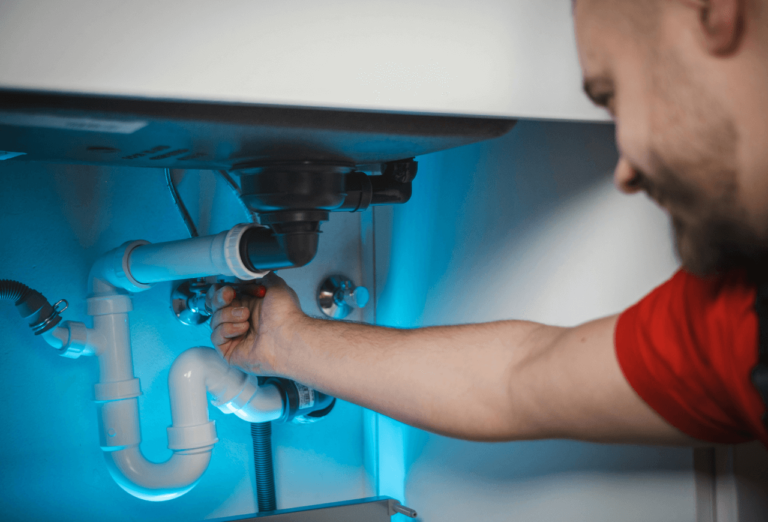Residential Water Extraction Guide
If you own a home, then you are probably aware of the potential for water damage to your property. In your house, there are bathroom fixtures like sinks and tubs, plumbing pipes throughout the structure, a hot water tank, a washing machine, a dishwasher, and other appliances that use water regularly. There are exterior elements as well, such as the roof, gutters, and other drainage equipment that help protect the structure from accumulating moisture.
Any of these features can malfunction in a way that causes water damage in your home. Plus, there is always the possibility of excessive rain or another natural disaster that can cause flooding.
When moisture collects where it shouldn’t be on your property, it can have a devastating effect. Porous materials like drywall and wood flooring can warp or rot. Mold can thrive in dark, damp environments that are hard to find, creating additional microbial growth and safety hazards from breathing the air. The damage caused by the incident can ruin floors, walls, carpets, furniture, and other building materials.
Water Extraction Steps
When you are dealing with water damage, the most important thing you can do is take action immediately. The longer you allow standing water to sit, the more damage it can cause to your home. The following steps can help you mitigate the issue and prevent further damage caused by the moisture.
Find the Water Source
Before you even start to think about removing the water, you need to figure out where the source of the leak is. You may have to shut down a water supply in your home depending on if it is a certain pipe or appliance, so locate the associated valve and close it.
Determine the Best Extraction Process
The level of the accumulation will have an effect on how best to extract it. Your submersible pumps, (sump pumps), may be able to handle flooding in the basement. Or, you can buy or rent a pump or wet/dry vacuum to remove as much water as possible. If you do not have the equipment needed to get the job done, you may need to consider working with a Portland water damage restoration company.
Implement a Thorough Evaporation Process
Removing the standing water is one thing. Squeezing out every drop of moisture is another. Evaporation refers to the process of turning water from a liquid into its gaseous state, known as water vapor. You can do this with large fans or air movers that will transform the moisture into water vapor, pulling it into the air and making it easier to remove with dehumidifiers.
A Drying Process for Possessions and Building Materials
Allowing things to dry out is crucial to returning your property to its pre-loss condition. You may need to employ the use of dehumidifiers, but you should also remove as many wet items from the affected area as possible. Bring them outside to air dry. The fewer wet items that are in the room, the faster it can complete evaporating and dehumidifying. Make sure that you allow sufficient drying time before bringing items back into the room.
Cleaning
With moisture levels back to normal, you now have to think about cleaning up the damage. You may have to invest in mold remediation. There could be leftover contaminants in the air or on surfaces that need to be thoroughly cleaned. Leftover debris will need to be removed, as well as any waste that was left behind by the water. If you take on this whole project yourself, it may be wise to schedule a professional inspection to see if you missed any affected areas.
Investing in Water Extraction Services
When the damage from standing water is too great, then you may need to invest in professional water extraction services. The good news is that insurance will often cover the expenses that come with hiring an outside firm, though this will depend on what caused the damage.
Professional Inspection
You may not have the right tools to find every drop of moisture that doesn’t belong, but these professional teams do. They have specialized equipment like infrared cameras and moisture meters that can help locate every spot where water has collected, allowing for a more thorough removal process. These tools can detect hidden moisture as well.
Efficient Extraction Equipment
To restore your property to its original condition, the latest equipment is required. You don’t want to come to the end of the job and find out there is more water left behind. Otherwise, mold could develop and further damage could occur to structural elements or other materials. Professional services will conduct thorough water absorption with top-of-the-line equipment so you can be confident that all the moisture is removed.
A Finished Product
You are probably not an expert in moisture removal, and returning your building to its original condition requires a professional touch. Certified contractors will complete the job to industry standards, ensuring that your property receives 100% water removal. From extraction to chemical removal to remodeling, the full water restoration process can be completed by this group of specialists.
Making the Decision
Whether you decide to do the water damage restoration process yourself or work with a professional contractor, you will have to weigh the pros and the cons. Working with a water removal service may be more expensive, but you are more likely to see your property get back to normal. It also depends on the level of water damage and whether or not you have the resources to remove water effectively, clear every chemical contaminant from the air and other items, and implement repairs.
Prioritize the integrity of the building and the health of everyone in it when you make this decision. Cutting corners could result in a shoddy water restoration attempt that will pose health risks to all involved.



